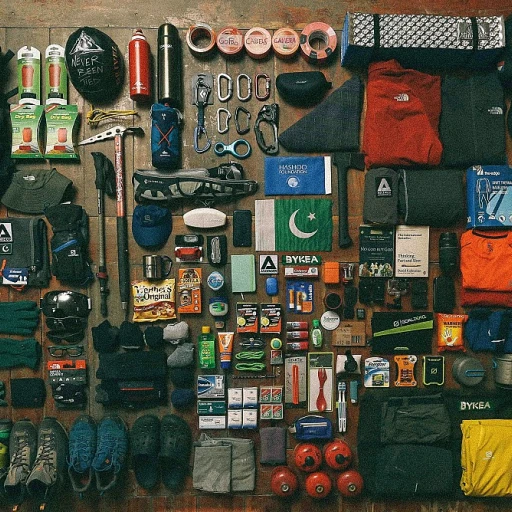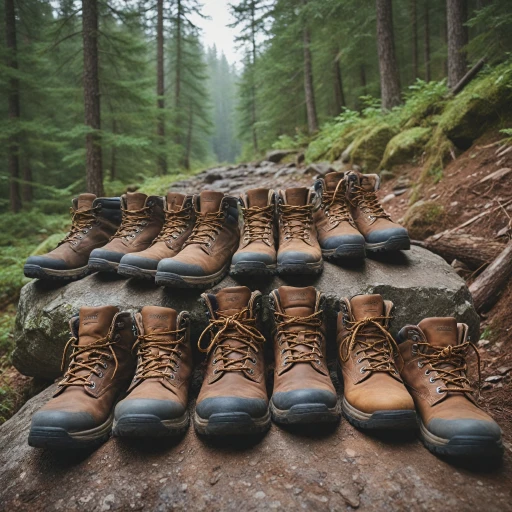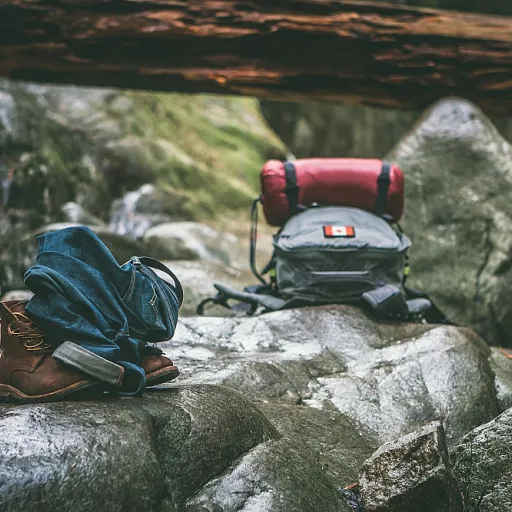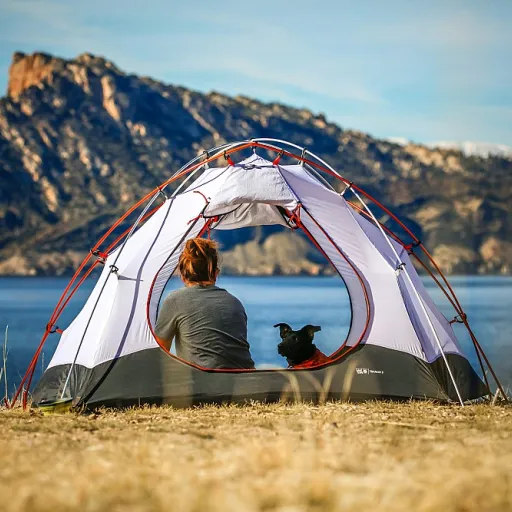
Understanding the role of a walking staff on rugged trails
The importance of stability and balance in rugged terrain
When tackling challenging hikes, stability and balance become non-negotiable. A walking staff, sometimes called a hiking stick or cane, is more than just a simple aid; it’s a key piece of gear for anyone navigating uneven ground, rocky paths, or steep slopes. The right walking staff can help distribute your weight, reduce strain on your knees, and provide extra support when your hiking boots are gripping loose gravel or slick mud.
How a walking staff enhances your hiking experience
Walking staffs come in many options, from classic wooden canes to modern metal hiking poles with rubber tips or spike ferrules. Each design offers unique benefits. For example, a metal spike or spike ferrule at the bottom of your staff can dig into soft earth or ice, while rubber cane tips or flat foot ferrules are better for hard, rocky surfaces. Some hikers prefer a combi tip, which lets you switch between a rubber ferrule and a metal spike depending on the terrain.
- Balance: A walking staff acts as a third point of contact, helping you maintain balance on tricky trails.
- Support: It can reduce fatigue by sharing the load, especially when carrying a heavy pack.
- Traction: The right tip—be it a round bottom, single point, or ice grip—improves traction and prevents slips.
Choosing the right staff for your needs
Whether you’re using a hiking staff, walking stick, or cane, the fit and size matter. A staff that’s too short or too long can throw off your posture and make walking more difficult. Replacement cane tips, rubber ferrules, and spike ferrules are all important for adapting your staff to different conditions. If you’re curious about the best options for your next adventure, check out this guide on essential tips for using trekking poles effectively.
Understanding the role of your walking staff is the first step to safer, more enjoyable hikes. In the next sections, we’ll dive deeper into choosing the right staff, mastering techniques for ascents and descents, and how to integrate your staff with your hiking boots for optimal performance.
Choosing the right walking staff for your hiking style
Key Factors When Selecting Your Walking Staff
Choosing the right walking staff is more than just picking up the first stick you see at the trailhead. The right hiking staff or walking stick can make a big difference in your comfort and stability, especially on challenging terrain. Here’s what experienced hikers and mountaineers should consider:
- Material and Weight: Options range from lightweight aluminum to sturdy wood or carbon fiber. Lighter materials are easier to pack, while heavier woods can offer more durability and a classic feel.
- Adjustability: Telescoping or combi staffs allow you to adjust the size to fit your height and the terrain. Fixed-length sticks can be lighter but may not suit every situation.
- Grip and Handle: Look for ergonomic handles that fit your hand comfortably. Some walking canes and hiking sticks feature cork or rubber grips, which help reduce sweat and vibration.
- Tip and Ferrule Options: The bottom of your staff is crucial. Rubber tips are great for urban walking or rocky surfaces, while a metal spike or spike ferrule provides traction on dirt, mud, or ice. Some models offer interchangeable tips or replacement cane tips for different conditions.
- Special Features: Consider staffs with built-in ice grips, single point or flat foot bases, or even a round bottom for added stability. Replacement cane ferrules and stick tips are useful for long-term maintenance.
Remember, the right walking staff should match your hiking style and the environments you tackle. Whether you prefer a classic wooden cane or a modern hiking staff with a metal spike, make sure it fits your needs and packs easily with your gear. For more on how trekking poles can enhance your outdoor adventures, check out this guide on enhancing your hunting experience with trekking poles.
Proper walking staff techniques for steep ascents and descents
Mastering Staff Techniques for Steep Terrain
Navigating steep ascents and descents demands more than just strong legs and sturdy hiking boots. Your hiking staff or walking stick becomes a crucial extension of your body, offering balance and support when the trail gets tough. Here are practical tips for using your walking staff effectively on challenging slopes:- Adjust the size: On uphill climbs, shorten your walking staff or hiking stick so your arm remains at a comfortable angle. For descents, extend it to provide extra reach and stability. Many modern options feature combi or telescopic designs, making quick adjustments easy.
- Grip and placement: Use a relaxed grip to avoid fatigue. Plant the bottom of your staff slightly ahead and to the side of your leading foot. On steep descents, place the stick tips or spike ferrule securely before stepping down, especially if the ground is loose or icy.
- Choose the right tip: Rubber tips or rubber ferrules are ideal for rocky or paved surfaces, while a metal spike or spike ferrule offers better traction on dirt, mud, or ice. Some hiking staffs come with replacement cane tips or a combi system, allowing you to swap between rubber and metal as conditions change.
- Use both hands when needed: For particularly steep or unstable sections, consider using two walking sticks or hiking poles. This distributes your weight more evenly and reduces strain on your knees and ankles.
- Mind the bottom: Check that your cane tips or ferrules are in good condition. Worn-out rubber cane tips or a damaged metal spike can compromise your safety. Pack a replacement cane tip or two in your gear for longer treks.
Integrating your walking staff with hiking boots for optimal support
Maximizing Stability with Boots and Staff
Pairing your hiking boots with the right walking staff can make a significant difference on challenging terrain. The synergy between your footwear and your walking stick or hiking staff is crucial for maintaining balance, especially on uneven or slippery surfaces. When your boots have a solid grip and your staff is equipped with the appropriate tip—be it a metal spike, rubber ferrule, or ice grip—you create a stable base that reduces the risk of slips and falls.
Choosing Compatible Tips and Ferrules
Not all walking staff tips are created equal. For rocky trails, a metal spike or spike ferrule offers superior traction, while rubber cane tips or rubber ferrules are better for hard-packed dirt or paved sections. If you encounter ice or snow, an ice grip or combi tip can provide the necessary hold. Always check that your staff’s tip fits the terrain and matches the tread of your hiking boots for optimal performance. Carrying replacement cane tips or stick tips in your pack is a smart move for long hikes.
Adjusting Staff Size for Boot Height
The height of your hiking boots can affect how you use your walking staff. High-cut boots offer more ankle support, so you might prefer a slightly shorter staff for better leverage. Conversely, with low-cut boots, a longer staff or cane can help compensate for reduced ankle stability. Many walking sticks and canes are adjustable, allowing you to find the size that best fits your walking style and boot type.
Technique: Planting and Pacing
When using your hiking staff, synchronize your steps so the staff and the opposite foot land together. This single point of contact, combined with the flat foot of your boot, distributes weight evenly and minimizes fatigue. On steep descents, plant the staff slightly ahead of your lead foot, using the round bottom or flat foot tip for added control. For ascents, a spike or metal tip can dig into the trail, giving you extra push-off power.
Quick Tips for Integration
- Inspect the bottom walking surface of your staff before each hike for wear or damage.
- Match your staff’s tip to the trail conditions and your boot’s outsole pattern.
- Pack a replacement cane tip or rubber cane in your kit for emergencies.
- Consider featured options like combi tips or ice picks for variable terrain.
By paying attention to these details, you ensure that your hiking staff and boots work together for maximum support and safety on every adventure.
Maintenance and care tips for your walking staff
Keeping Your Walking Staff Reliable on Every Trail
Regular maintenance of your walking staff is essential for safety and performance, especially on challenging hikes. Dirt, moisture, and rough terrain can wear down even the best hiking sticks, so a little care goes a long way.- Inspect the bottom regularly: The ferrule, spike, or rubber tip at the bottom walking end of your staff takes the most abuse. Check for wear or cracks. If your staff features a metal spike or spike ferrule, ensure it is not bent or loose. For rubber cane tips or rubber ferrules, replace them when they become thin or lose grip.
- Clean after every hike: Mud, sand, and debris can get trapped around the cane tips, combi ferrule, or stick tips. Wipe down the shaft and bottom with a damp cloth. For metal parts, dry thoroughly to prevent rust.
- Check the locking mechanism: If your hiking staff is adjustable, test the locking system before each trip. Dirt can clog twist locks or push buttons. Disassemble and clean as needed, and ensure the size adjustment fits securely.
- Store properly: Avoid storing your walking stick or hiking staff in damp places. If your staff is collapsible, pack it loosely to prevent stress on joints. For wooden canes or walking sticks, occasional oiling helps prevent drying and cracking.
- Replacement parts: Carry spare rubber tips, spike ferrules, or a replacement cane tip in your pack. Options like single point, round bottom, or flat foot tips are available, so choose what best fits your hiking style and terrain. For icy conditions, consider an ice grip or metal spike attachment for extra security.
Common mistakes to avoid when using a walking staff
Frequent Pitfalls When Using Walking Staffs
- Incorrect Size Selection: One of the most common mistakes is choosing a walking staff or hiking stick that does not fit your height or walking style. A staff that is too long or too short can cause discomfort and reduce stability, especially on uneven terrain. Always check the size and ensure the stick fits your stride and hand position.
- Neglecting Tip and Ferrule Maintenance: The rubber tips, ferrules, and metal spikes at the bottom of your walking staff are essential for grip and durability. Worn-out or missing cane tips, spike ferrules, or rubber ferrules can lead to slips, especially on wet or icy surfaces. Regularly inspect and replace these components to maintain optimal performance.
- Improper Technique on Challenging Terrain: Using the wrong technique during steep ascents or descents can put unnecessary strain on your joints and reduce the effectiveness of your hiking staff. For example, failing to adjust your grip or not using the ice grip or metal spike when needed can compromise safety.
- Overlooking Terrain-Specific Options: Not all walking sticks or canes are suitable for every trail. For rocky or icy paths, a spike ferrule or combi tip may be necessary, while rubber cane tips or flat foot designs are better for paved or soft ground. Carrying replacement cane tips or a pack of stick tips can help you adapt to changing conditions.
- Ignoring Maintenance and Storage: Failing to clean and dry your hiking staff after use, especially if it features metal parts or a round bottom, can lead to corrosion or reduced lifespan. Always pack your staff properly and check for damage before each hike.
- Using the Wrong Staff for Your Needs: There are many options, from single point walking canes to hiking staffs with featured ice picks or combi tips. Selecting a stick that does not match your hiking style or the trail conditions can limit your support and comfort.
By paying attention to these details—such as the right size, proper tip selection, and regular maintenance—you can avoid common issues and get the most out of your walking staff, hiking stick, or cane on every adventure.














